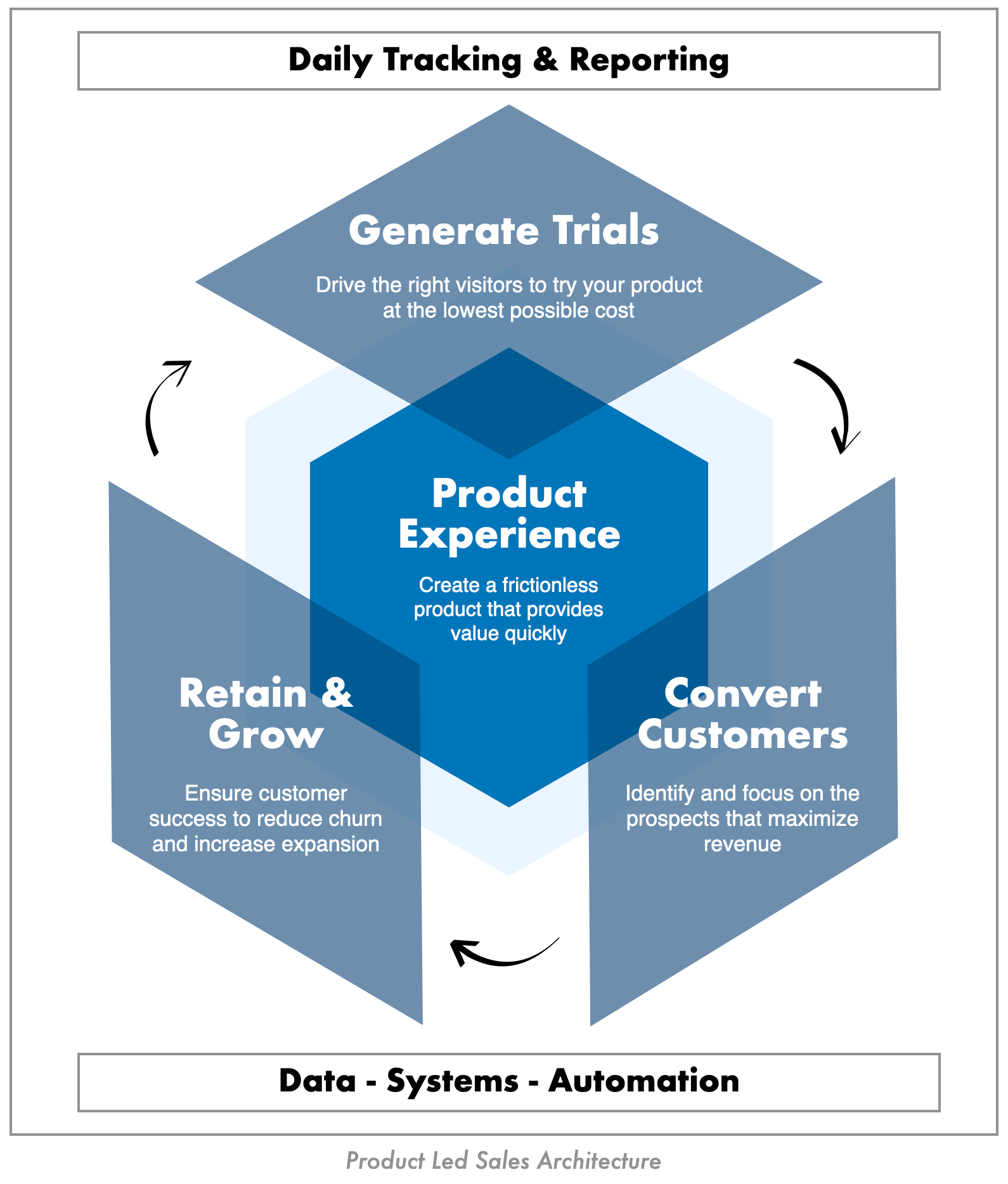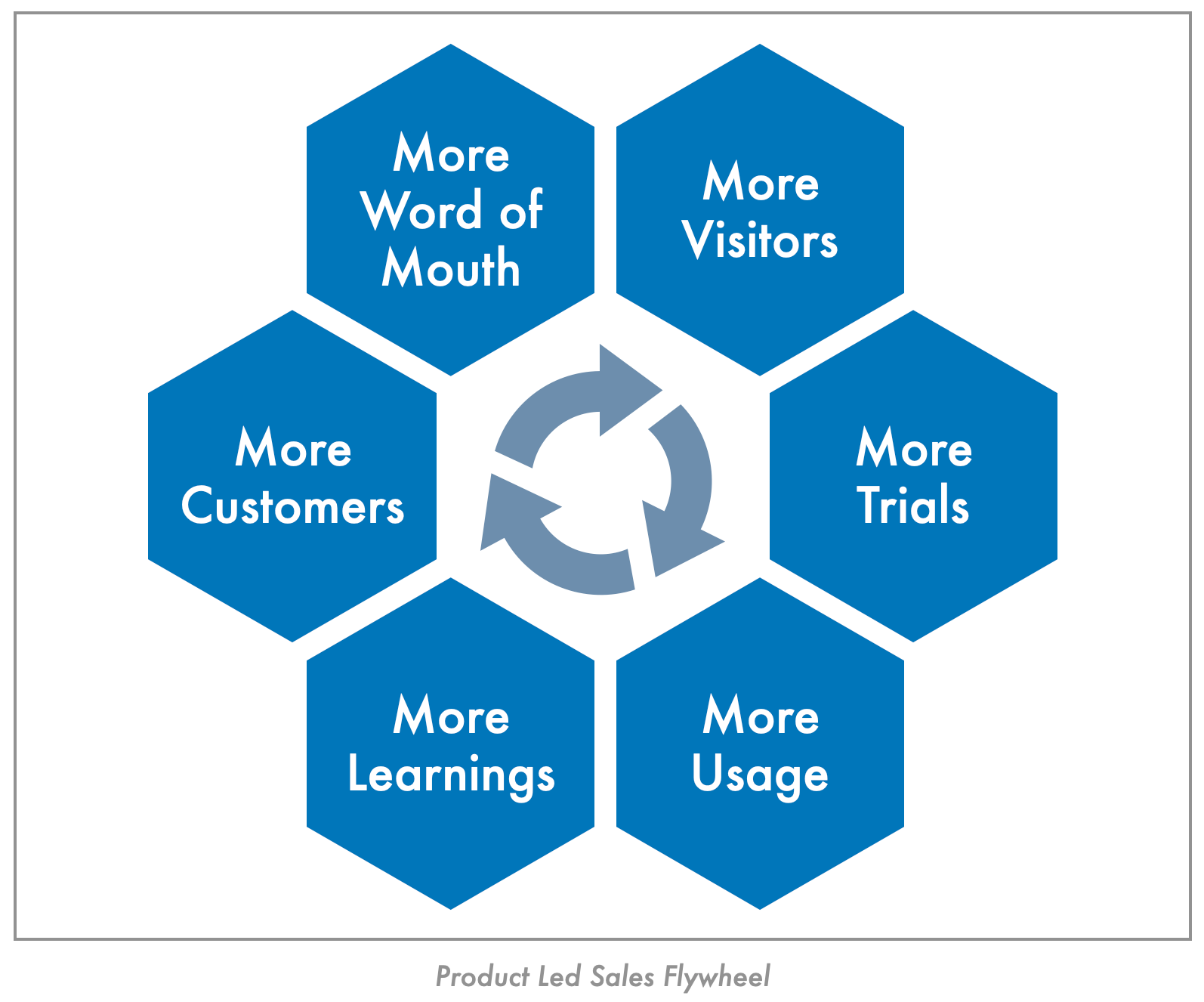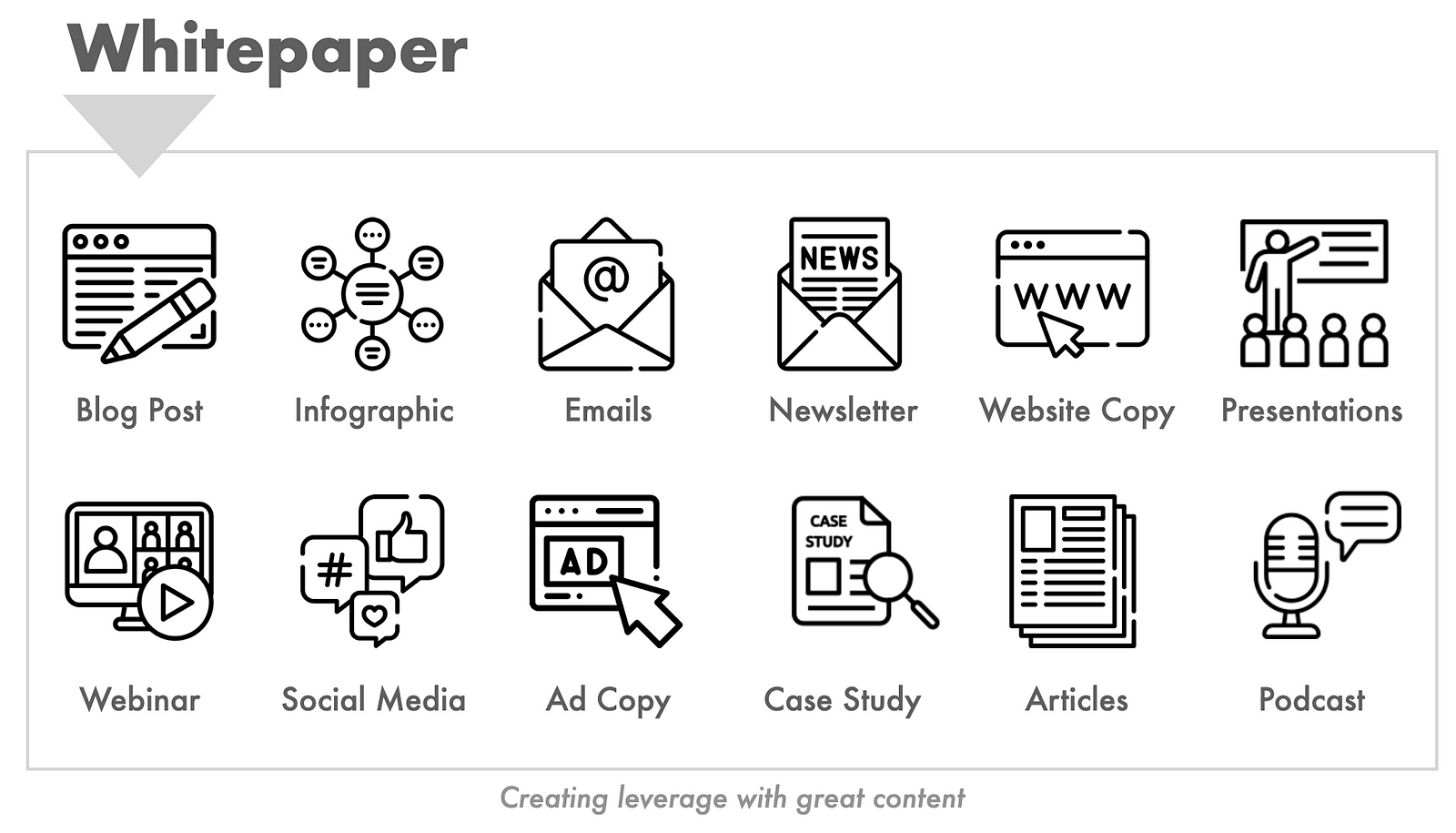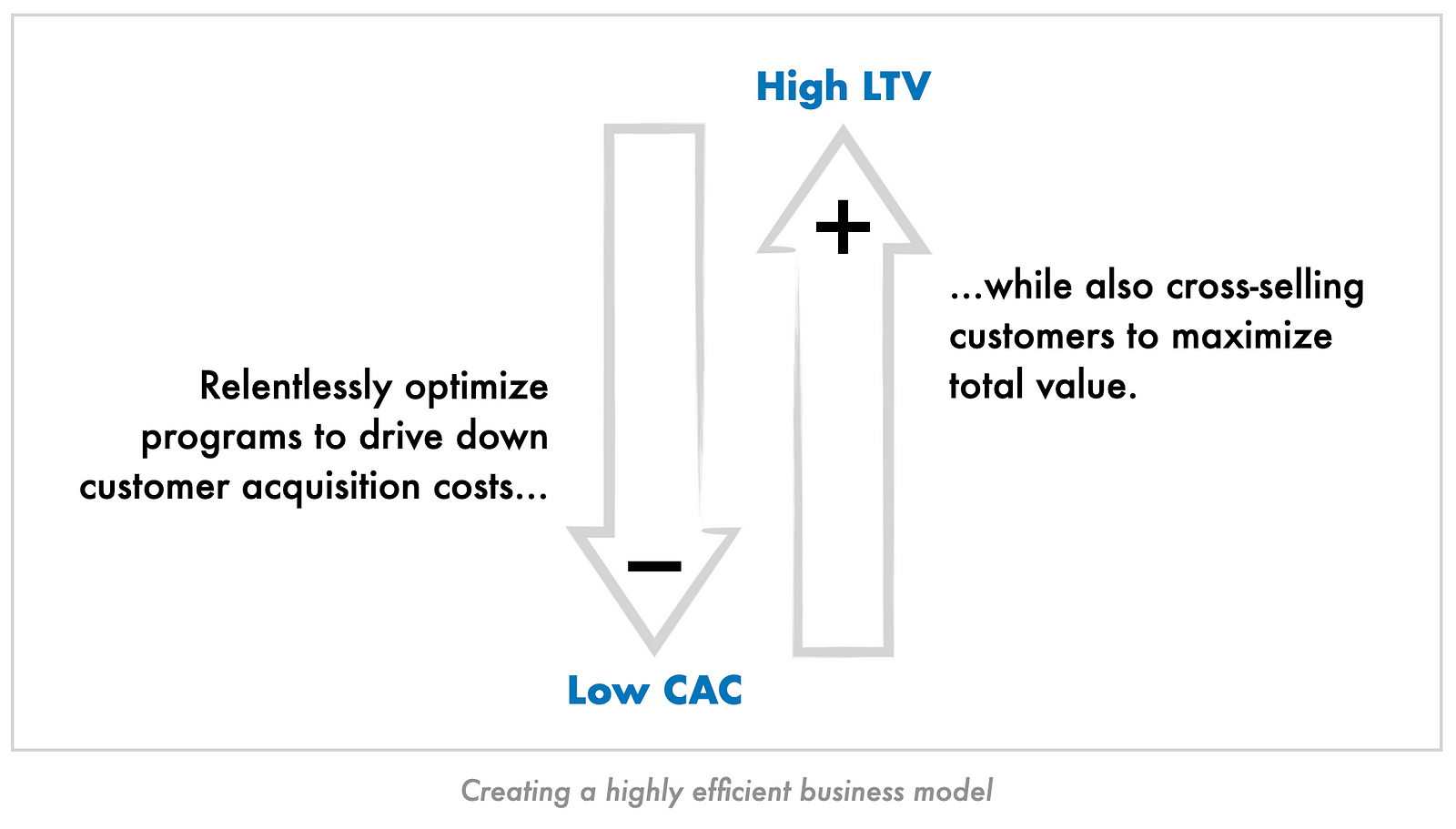Before Product Led Growth (PLG) became the hot buzzword, it was high-velocity sales. But I think Product Led Sales is more representative of the selling motion. Unfortunately, startups have stumbled as the industry has raced to adopt PLG.
I’m sure there is a litany of reasons why including:
- Thinking it’s a silver bullet to growth
- Trying to run two selling motions at once
- Not focusing enough on the rest of the organizational functions needed to support this motion
- Not analyzing whether or not you can sell a product with this motion.
Let’s set this aside and focus on how PLS works and what you need to know to succeed.
The goal is simple. You want to implement a selling motion that drives the highest customer growth (and revenue) while minimizing acquisition costs. It sounds easy, but it’s much harder to execute in the early days.
Keep reading to see why.
Let’s define what we’re talking about
There are a lot of ways to define Product Led Sales. Here is my take:
A selling motion that relies on rapid cycles and feedback loops across all parts of the organization to quickly close and grow customers thanks to a great product experience and hyper-efficient processes.
Some of you may cringe when you see the word “sales” or “selling” in the name or explanation. But that is the end goal, to capture a sale and drive revenue for the business.
Yes, the product is at the core of the experience, but you can’t ever lose sight of the ultimate purpose.
With the definition out of the way, let’s look at some characteristics of PLS.
- Focus on inbound marketing
- SaaS or downloadable product
- Low price point
- Selling to users, not buyers
- Short sales cycle
- Live and die by the data
- Operationally excellent
This selling motion takes alignment across product, engineering, marketing, sales, and support. Realize that your entire business needs to be architected for speed. Here is what it will look like in practice:

This sales motion demands continual small pushes in the same direction. Forget silver bullets. You are trying to build a flywheel. With every turn, you need to find ways to eliminate customer friction.

At the same time, you need to simplify your operations. If customers are outrunning your ability to serve them, you are dead in the water.
What you should measure
Before getting too far, let’s review the metrics to help you understand the effectiveness of PLS.
At a minimum, you should track and monitor the following:
- Traffic — you need to get users in the door
- Contact database — the first level of engagement
- Installed trials — these are what matter and feed sales
- Sales velocity — you want predictable/linear results
- Conversion rate — how is the engine working (trials, customers)
- CMRR — minimum monthly commit
- Churn rate — you need to keep customers; this is a growth killer
- CAC Ratio — informs spending on sales and marketing
- Gross Margin — the bottom line is just as important as the top
- LTV — the long-term value of each client
- Payback period — time to earn back your CAC (<12 mos is ideal)
- Customer Satisfaction — are you building supporters or detractors
Whatever you do, don’t put off capturing and exposing these metrics to the team. It helps you identify issues, creates clarity and alignment, and allows you to plan your next move.
Getting the flywheel going
Nothing happens until you can engage your target users. Think of marketing as the ignition switch of the flywheel.
The first step is to create a solid foundation. These are the four elements to get right from the start:
- Data: If you are running this play without adequate data, you might as well light hundred-dollar bills on fire. Remember, the goal is to drive growth while minimizing customer acquisition costs continuously. You can’t even begin this process if you don’t have clean, complete, and accurate data.
- Systems: You’ll be stitching together multiple platforms to support the marketing programs you’re going to run. As you choose solutions, make sure they can talk to one another, either with a native integration or something like Zapier.
- Automation: This is a 24/7 sales model. But it only works if you can automate processes. To get maximum efficiency and results, systematically remove any manual process until there aren’t any left.
- Content: This is fuel for the engine. As you plan your content calendar, remember that you can repurpose one piece into countless others. Here is a simple example of how you can use a whitepaper in 12 different ways.

With your foundation in place, you can turn your focus to efficiently acquiring traffic.
There are four areas to invest in right away.
- Social: Your community of users will be your best advocates. Proactively build, nurture, and engage these users on social media. Word-of-mouth about your product will grow exponentially.
- Awareness: Your product is solving a real problem for customers. Take your market and customer insights and turn them into thought leadership. These thoughts are gold for PR and AR.
- Paid Search: This is the fastest way to acquire traffic and can be the most expensive if you aren’t constantly optimizing your messages and spend. But don’t worry. By now, you know you have the data to improve continually.
- Advertising: Be clear about your target users and find them online. You can always sponsor or advertise on publications, sites, or communities.
The last leg of the race for marketing is to compel a visitor to convert.
The conversion event may be a free trial or a paid signup. Let’s assume for this discussion that we want to get our users to start a trial. It’s a low barrier to entry, and it kicks off the next part of the journey.
- Lead nurturing: The first thing to realize is that not every visitor will convert. However, they still may engage, which is an opportunity to grow your marketing database. Drop these users into nurturing campaigns so you can drive them back to the site and into a trial.
- Website optimization: Treat the website like a product. Don’t just put up your content and move on to the next project. Monitor your data and optimize the experience to maximize your return on marketing spend.
- Test. Test. Test.: The only way to get the flywheel turning faster is to make it more efficient. The only way to do that is to run experiments to learn where you are losing users. Do this weekly and watch how fast the business improves.

Turning sales up to 11
Nothing is more exciting than seeing the sales rate pick up weekly. Keep in mind that sales velocity is a mindset that requires discipline.
It all starts with the methodology.
This approach is more science than art and requires a straightforward process and alignment with marketing.
First, this is an inside sales model. Hire low-cost reps that are aggressive.
Don’t leave anything to chance. Guide prospects through clear product gates using automation. Once they reach a certain threshold, assign that prospect to a rep.
Be sure to keep the alignment and integration with marketing every step of the way. Provide visibility and feedback around what’s working and what isn’t. Together you’ll be able to run faster than you ever thought possible.
Evolve how you motivate
Forget quarterly goals. That’s an eternity in this model. Instead, align the incentives to rapid (i.e., daily or weekly) results. Find ways to drive week-over-week improvement based on new learning and better process.
One killer aspect of this model is that you can start to predict the business vs. trying to forecast. By having a firm grasp on your funnel, you can also begin to experiment to drive up your conversion rates and deal size.
You can see how measurement is everything in this game. Don’t just track your metrics. Expose them to your entire team and business. Getting PLS right is a company-wide initiative.
Maximize revenue/rep
Once the flywheel starts humming, there will be far too many trials to engage on. That’s OK. The sales team needs to prioritize high-value, engaged users. You either close or forget them. Marketing can handle nurturing those that aren’t ready to buy.
Like any deal, compelling events matter. Create a forcing function with trial expirations, special pricing, beta access, etc. This is another excellent area to be creative and run tests.
Get into the habit of sharing insights and issues with the broader team (support, product, and marketing). Sales will see firsthand where the process fails. The faster you can fix it, the more deals you can get in the door.
Customer service is part of the “product”
Not every user is going to follow a happy path. If they get stuck, the customer service team has to jump in and get them back on track. Since most PLS models are month-to-month, you must win the customer’s business daily.
Here are some tips to remember:
- Automate everything you can: Connect the systems and data so you can automate communications to drive up effectiveness and drive down costs
- Create an SLA: Communicate the type of support & response times, both internally & externally. Most importantly, exceed expectations.
- Keep improving: Capture & publish new insights to enable customer self-service. Not only does it help drive up customer satisfaction, but it also creates massive efficiencies inside the business.
In PLS, customer service can’t just be reactionary. Part of the job is figuring out how to drive more usage and cross-sells. Getting this right is another way to accelerate growth and stickiness.
To be effective, teams must understand what is driving churn and relentlessly eliminate it from the business. There is no greater growth killer than churn.
Customer service should also take advantage of the automation built by marketing to drive new product use and expand usage across the installed base.
Finally, don’t be afraid to sell premium services. Not everyone wants or needs it, but larger customers will, and it’s a great revenue stream. As a bonus, it reinforces usage and stickiness.
If you execute, you’ll create a vocal community of advocates. Find ways to nurture this community and watch how they become your best marketing and sales channel.
Product touches every part of this model
Many startups get PLS wrong by believing that the product is all you need. As you can see, almost every business function is required to make PLS work. However, there is no question product is at the center of making this model work.
If you’re leading Product and running this play, there are a few things to remember.
First and foremost, customers need to experience your value instantly. Don’t just show them how it works. Help them realize value in their first session.
Of course, it doesn’t stop with a customer’s first experience. You need to think about the journey they’ll go on with your product and how it can sell itself in a very short period of time.
Depending on your product type, design in ways to drive more usage (people, actions, etc). The more sticky you can make the product, the better.
Measure everything. It’s imperative to see where users are getting stuck, giving up, or having success.
You’ll find friction in the most unlikely places. Once you do, eliminate the chokepoints you find as quickly as possible.
In this model, pricing is critical to the flywheel. When you get it right, it helps everything spin faster. There is no silver bullet here. You’ll have to test and learn.
Also, pay attention to your gross margin. Operational efficiency is a feature and one you shouldn’t put off too long.
One of the best parts of PLS is that product has more control over the business results. Don’t shy away from this opportunity to act like an owner. You will feel an energy you never had before.
A few final thoughts
It’s challenging to summarize an entire selling motion in a few pages, but I hope some of these insights give you a clearer sense of what it takes to be successful.
PLS is not for everyone.
It’s not a silver bullet either. However, when you find the right opportunity, get everyone aligned, and get the flywheel spinning, you’ll swear there is no other way to sell software.
Good luck, and please share your thoughts and comments.
For more insights please follow me on Twitter




Good stuff, Chad!